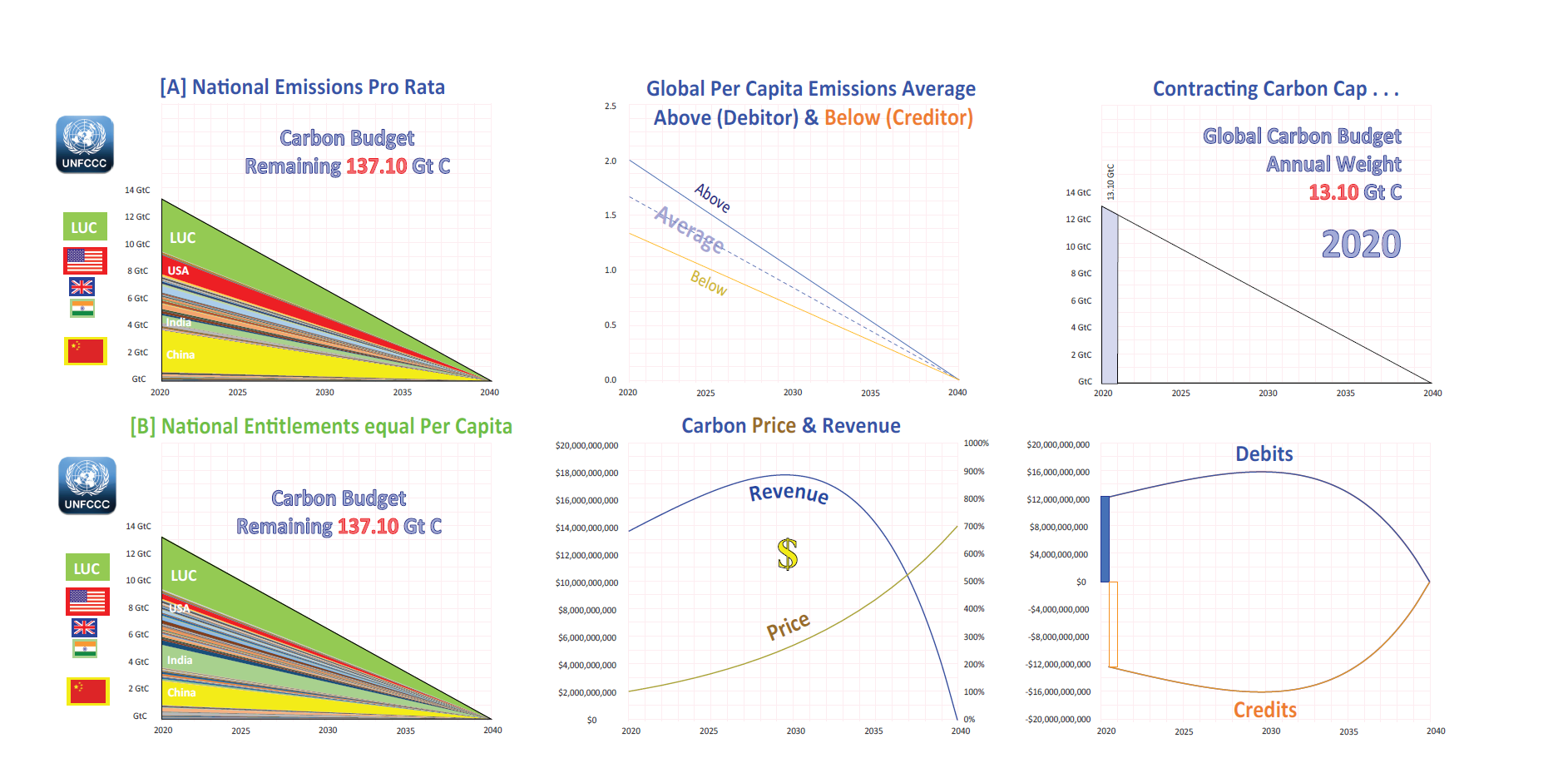Since 1990 GCI has well-tempered the focus on UNFCCC-Compliance with C&C
"The first Best Option" Carney
 Click logo to return to 'links-page'
Click logo to return to 'links-page'
GCI proposed Contraction & Convergence, Allocation & Trade at COP-2 in 1995.
In December 1997, a C&C-based way-ahead was debated in the final session of COP-3,
with strong interest from India, China the Africa Group the USA. The United States stated,
"C&C contains elements for the agreement that we may ultimately all seek to engage in."
In 2009, Adair Turner, then Chairman of UK Climate Change Committee,
told the Parliament that C&C is the basis of the UK Climate Act (UKCA).
In his Reith Lectures 2020, Mark Carney described the Rajan-Global-Carbon-Incentive-Proposal (GCI) as
"the first best option."
With an inclusive full-term global carbon-cap, the GCI is effective as it reconciles tension
between over and under consumers of carbon subject to the primary goal of UNFCCC-Compliance.
This is equivalent to contraction with immediate convergence
as argued by the Government of China at COP-15.
Renewable replacement rates

There are 42 slides in this 'heuristic'.
Each slide is identical except . . . .
[a] each slide shrinks by 1/20th of the total carbon budget weight (137.5 Gt C)
annually from 13.1 Gt C in 2020, to absolute zero Gt C in 2040.
[b] All weights (cumulative & marginal) are shown counting down for each year.
[c] The debit/credit balances expressed as global $s are shown for each year calculated
above & below the global per capita average of carbon emissions of the global budget.
[d] within this structure carbon-debitors pay into a global fund
while carbon-creditors withdraw from it.
[e] with a population base year for 2020 (7.5 billion).
It may seem 'dry' but this is quite deliberate.
[f] As with the carbon, all net calculations have been purged from these accounts.
[g] Globally aggregating any 'net-calculations' is only relevant to that absolute calculation,
which obviously has to be done first.
[h] The procedure shown, halves global emissions between 2020 & 2030 -
i.e. minus 50% (to avoid "uncontrollable ecosystem collapse" (Figueres),[i] & completes to -100% by 2040 which (sadly) still adds
(albeit) declining amounts of CO2 to the global atmosphere.